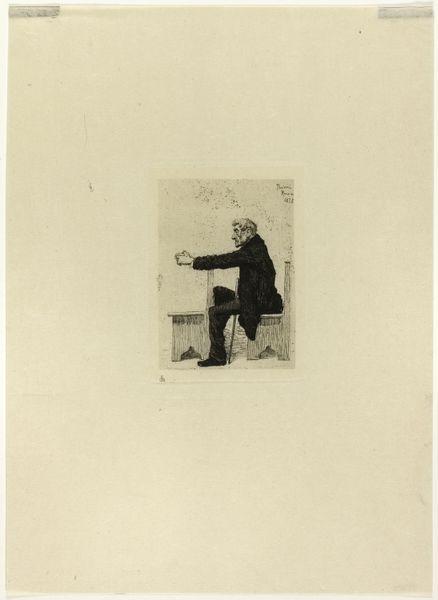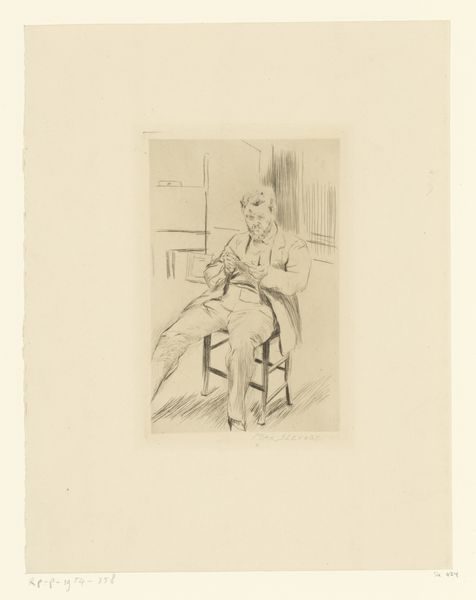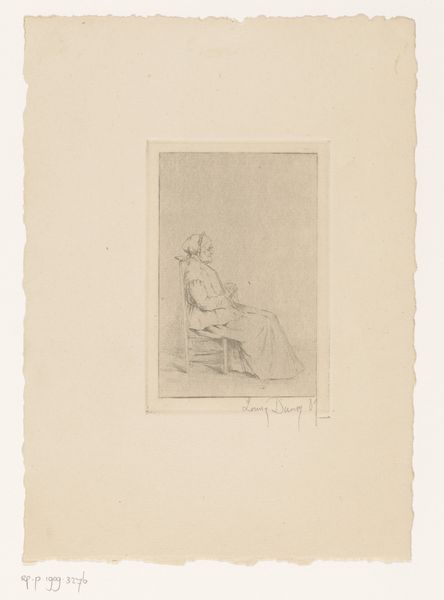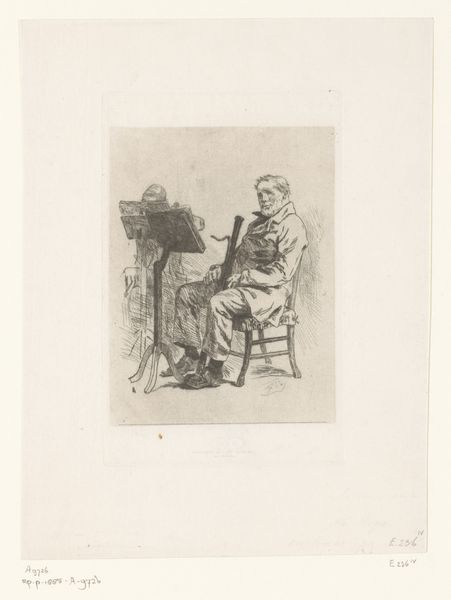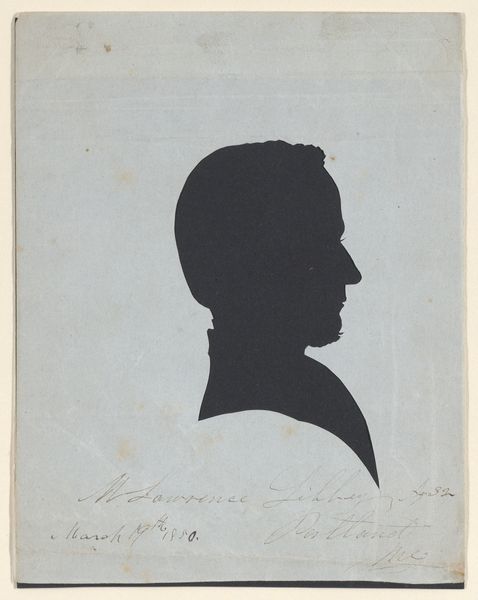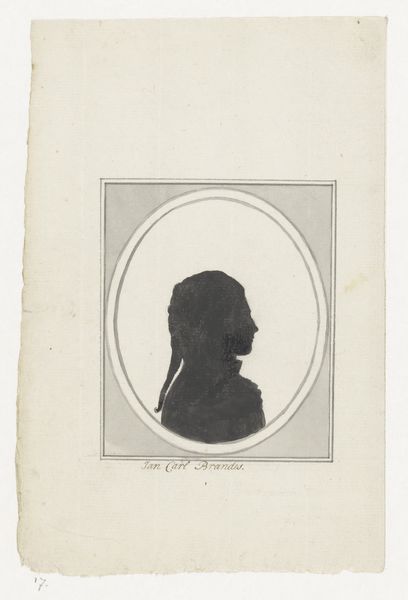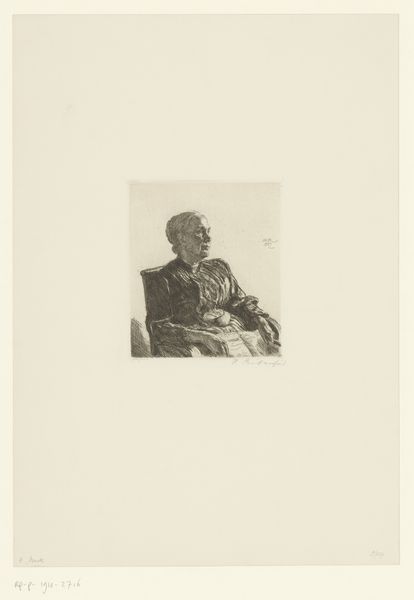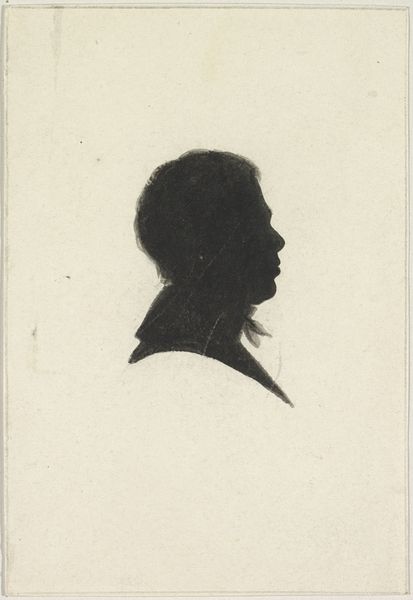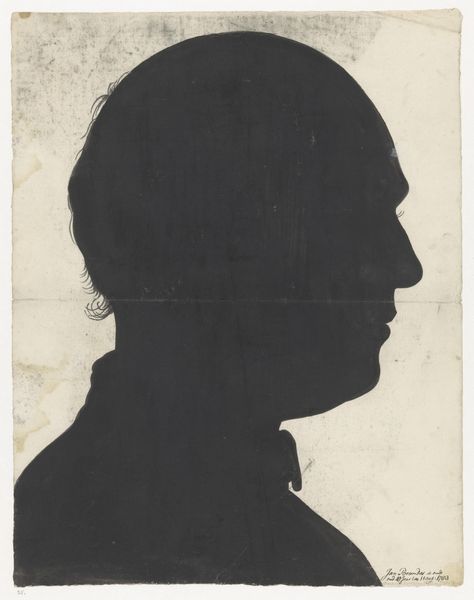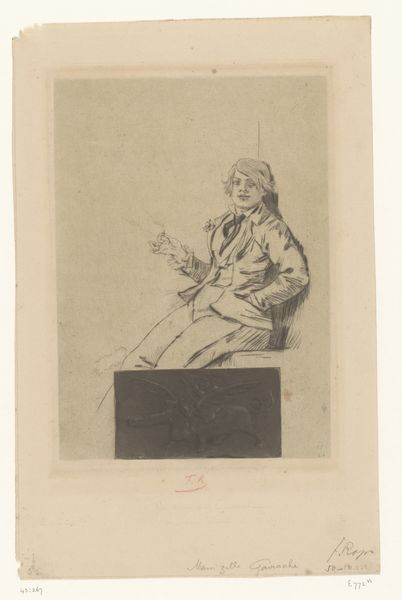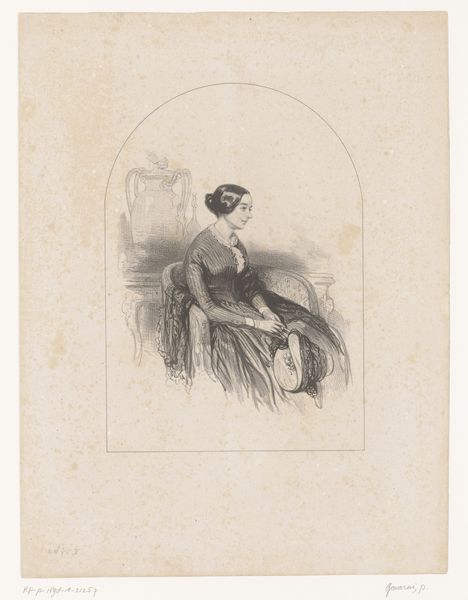
drawing, print, paper
#
portrait
#
drawing
# print
#
caricature
#
caricature
#
paper
#
romanticism
#
france
Dimensions: 252 × 175 mm
Copyright: Public Domain
Editor: So here we have Auguste Edouart's silhouette of "John L. Hammond Seated," created in 1841 from cut paper. It's striking how modern the simple monochrome feels. What's your perspective on this piece? Curator: I see a fascinating document of material practices and social relations. Edouart mass-produced these silhouettes, using a physiognotrace-like device and standardized techniques, essentially operating a portrait factory. This brings up interesting questions about labor and skill: was he an artist or a craftsman? Was this high art or something closer to folk art? Editor: I never thought about it that way! It seems so... individualistic as a portrait, but I guess it’s more of a commodity when you consider how it was made. So the means of production shape our understanding? Curator: Absolutely! The choice of a silhouette itself is telling. It’s quick, cheap, and reproducible, fitting into the emerging consumer culture of the 19th century. And think about the paper – where did it come from? Who processed it? Every aspect of its material existence speaks to wider social and economic networks. Even the subject, John Hammond, probably belonged to a certain class able to afford such things. Editor: That’s amazing. Looking at it now, it’s less about *him* as an individual and more about *how* and *why* his image was produced in this manner and at this time. Curator: Precisely. By focusing on the materials and the means of production, we shift the focus away from traditional art historical concerns with authorship and genius. We begin to see how economic forces can intersect artistic expression. What do you take away from that? Editor: I suppose it encourages us to appreciate how much the art world is based on things beyond the artwork. Thank you! Curator: Exactly. Next time you see art, think about its supply chain!
Comments
No comments
Be the first to comment and join the conversation on the ultimate creative platform.
